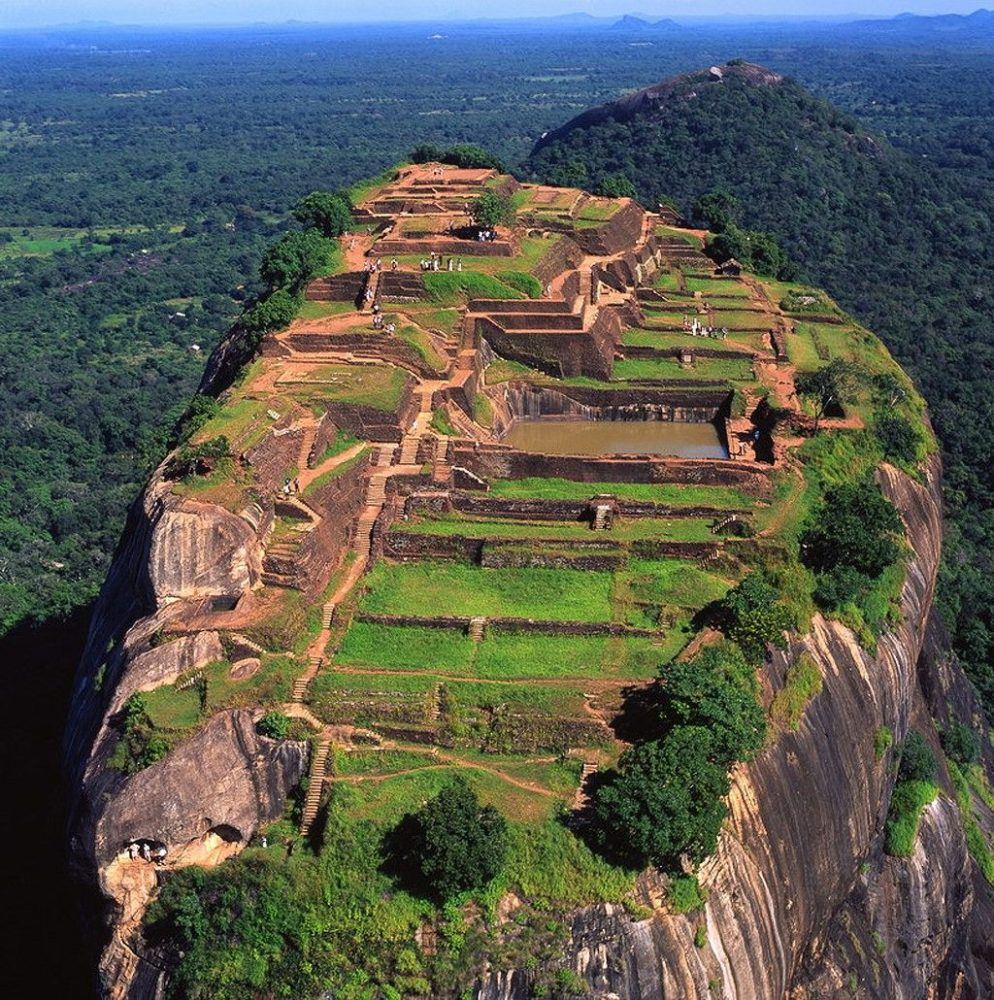Sigiriya, also known as Lion's Rock, is a UNESCO World Heritage site located in the central Matale District of Sri Lanka. It is a rock fortress and palace ruin that sits atop a 200-meter high rock column,and is surrounded by the remains of an extensive network of gardens, reservoirs, and other structures. The site is renowned for its ancient frescoes, which depict colorful and detailed scenes of life in the royal palace, as well as its breathtaking views of the surrounding landscape.
The history of Sigiriya dates back to the 5th century AD, when it was chosen as the site of a new royal capital by King Kashyapa. Kashyapa was the son of King Dhatusena, who had been overthrown by his own brother, Moggallana. Kashyapa, seeking to avenge his father's death and reclaim the throne, built the rock fortress of Sigiriya as a means of defending himself against his enemies. He also used the site as a palace, and it is believed that he lived there until his death in 495 AD.
The rock fortress of Sigiriya is divided into two main sections: the upper palace and the lower palace. The upper palace, located at the top of the rock column, consists of a series of interconnected buildings, including the Royal Palace, the Audience Hall, the Mirror Wall, and the Lion's Mouth. The Royal Palace was the residence of the king and his family, and contained a series of rooms and corridors decorated with frescoes, carvings, and other artwork. The Audience Hall was used for meetings with officials and other important individuals, and contained a throne room and a series of smaller chambers. The Mirror Wall was a highly polished surface that was used to reflect the image of the king, and was decorated with inscriptions and graffiti left by visitors to the site. The Lion's Mouth, located at the entrance to the upper palace, was a series of steps that led up to the entrance of the palace, and was guarded by a giant stone lion.
The lower palace, located at the base of the rock column, contained a series of gardens, reservoirs, and other structures that served as the hub of daily life at the site. The gardens were irrigated by a system of reservoirs and channels, and contained a variety of trees and plants, including coconut palms, mango trees, and banana trees. The reservoirs, which were fed by natural springs, provided a source of water for the gardens and for the palace itself. Other structures at the lower palace included a series of temples, a hospital, and a number of buildings that were used for storage and other purposes.
One of the most famous features of Sigiriya is its ancient frescoes, which depict scenes of life in the royal palace. These frescoes, which are located on the western face of the rock column, are considered to be some of the finest examples of ancient Sri Lankan art. They depict a variety of subjects, including scenes of everyday life, religious rituals, and historical events. The frescoes are notable for their vivid colors and fine detail,and are an important part of the site's cultural heritage.
In addition to its ancient frescoes, Sigiriya is also renowned for its breathtaking views of the surrounding landscape. From the top of the rock column, visitors can see for miles in every direction, taking in the sweeping vistas of the surrounding countryside. The site is particularly popular with hikers and nature lovers, who come to explore the surrounding forests, waterfalls, and other natural attractions.
Overall, Sigiriya is a must-see destination for travellers to Sri Lanka. Its ancient history, beautiful frescoes, and stunning.





Post a Comment